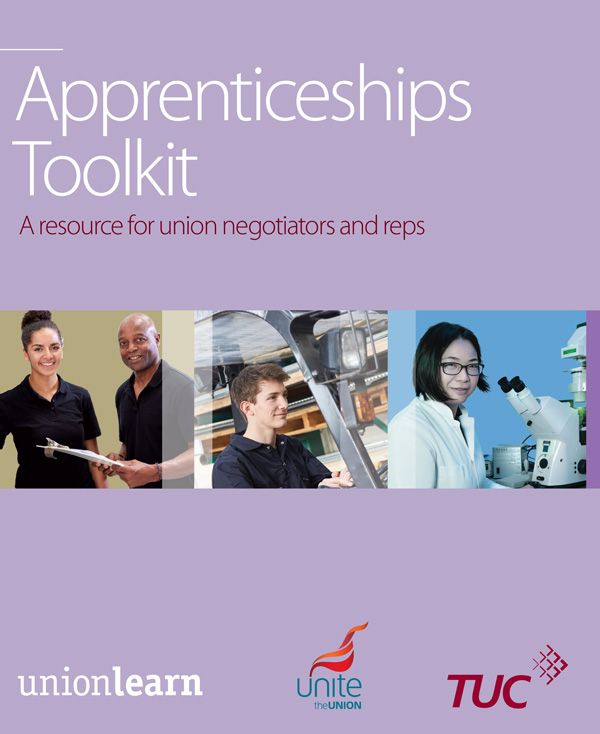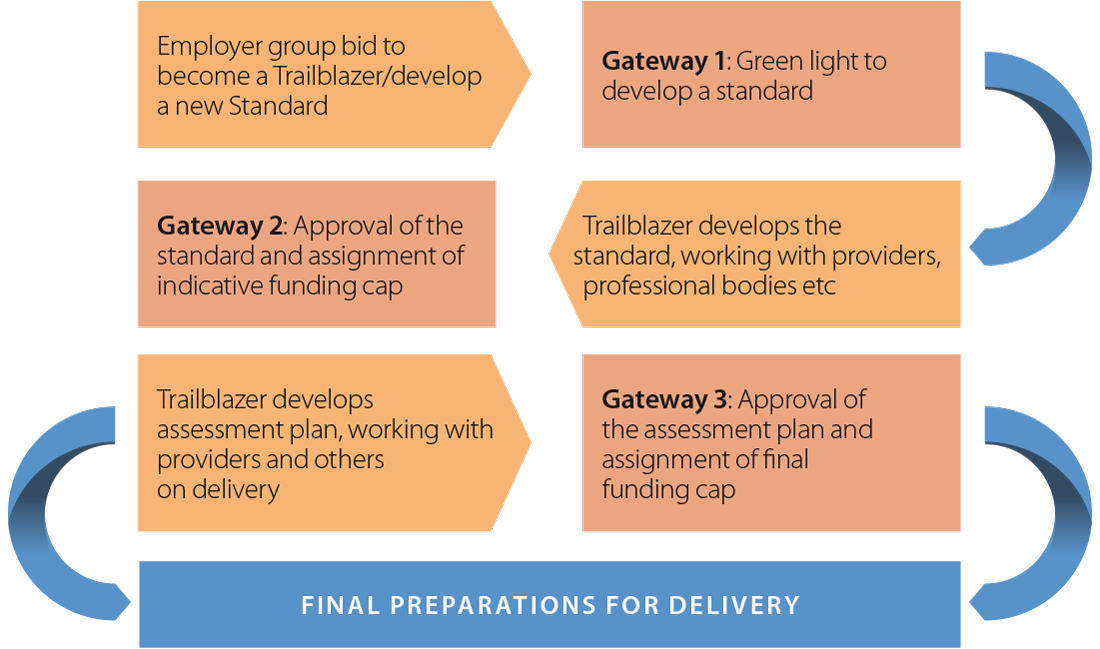The government has committed to substantially increase the number of Apprenticeships. Therefore, it is crucial that union reps and officers negotiate with employers to set up high-quality Apprenticeships.
Apprentices should have contracts of employment for at least the duration of the training period
Trade unions support and represent apprentices in a number of ways, from recruitment and organising, to pay bargaining, learning and skills, equality and diversity and health and safety. Unions will have their own negotiating approaches on Apprenticeships. Some will include Apprenticeships in learning agreements, some will draw up specific Apprenticeship agreements and others will treat apprentices like any other category of worker.
Apprenticeships are required to meet government minimum standards. These include: a minimum duration of 12 months, employed for 30 hours per week (this can be reduced to a minimum of 16 hours to accommodate part-time apprentices, for example, but only in exceptional circumstances); an English and maths requirement; and minimum requirements around on and off the job training. Apprentices have the same statutory rights as other employees. Unions will often negotiate higher quality Apprenticeships that far exceed these minimum standards.
The TUC Charter on Apprenticeships (www.unionlearn.org.uk/charter-apprenticeships) outlines the key principles that should underpin an Apprenticeship and includes the following points:
Contract of employment – Apprentices should have contracts of employment for at least the duration of the training period. Ideally an Apprenticeship should lead to a guaranteed job.
Decent pay and conditions (see the Pay sheet) – One in seven apprentices are not receiving the minimum wage to which they are entitled1. These are unlikely to be apprentices in unionised workplaces as unions will negotiate fair wage rates for their apprentices. Wage rates should progress incrementally as apprentices begin to increase their skill levels. If percentage rates are negotiated, they should start as high as possible and progress by time served or competencies achieved, rather than by age. In industries such as construction with nationally agreed apprentice pay, ensure the local employer is complying with that agreement.
High quality training – (See also the High Quality Training sheet). Union negotiators will want to ensure that Apprenticeship programmes in their workplace identify a clear programme of training, including sufficient time spent o the job, such as in college, in dedicated training centres at the workplace, or in private study.
Access to a trade union – Apprentices have the right to join a trade union. Apprentices are often young people with little experience of the workplace or trade unions. Union reps should negotiate with employers to make sure that the union has the opportunity to speak to apprentices when they start work.
























